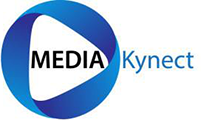In this article, we will be going over advanced SEO techniques to help you further your online presence.
Advanced techniques can be difficult and complex for some people, but they are worth the time investment if you want your website to rank higher on search engines.
We’ll go over everything from analysing your log files to using schema markup so that you have a complete understanding of advanced SEO techniques!
Contents
Analyse your log files
Log files are the physical records of various aspects and events throughout a website. Log files can include:
- The IP address and country of any user who visits your website (this is usually your ISP, otherwise known as Internet Service Provider)
- A detailed timestamp from when they visited when they left
- What type of browser was being used
- Logs will also include what page they viewed on your site, how long they spent on it, their search history for any pages that have searched for
 Once you know how to view these logs, which involve checking with your web host or server administrator, you can start to make sense of the information and use it in your SEO strategy.
Once you know how to view these logs, which involve checking with your web host or server administrator, you can start to make sense of the information and use it in your SEO strategy.
You can see if your crawl budget is being wasted on pages that have no value and take action with them, or you check what is being searched for on your website, and if you don’t have it, you can create it!
Once you have access to your website’s log files, it’s important to analyse them properly to get the most out of them.
Some of the best practices for doing this include:
- Checking where your website’s visitors are coming from
- Looking at which pages are being visited the most and the least
- Seeing how long people are spending on your website, and which pages they’re spending the most time on
- Checking which browsers people are using to visit your website
- Investigating any 404 errors that may be happening on your website
Once you have an understanding of what the data in your log files is telling you, you can start to make changes and improve your SEO strategy.
Broken link building
Broken link building is the process of outreaching to websites that have broken links on their website and asking them to replace the link to your page instead.
Broken link building can help increase your site’s ranking since the search engine algorithm will rank your website higher because it looks like there are more quality backlinks.
This technique has been around for a while but remains one of the best ways to build good links for any site and especially if they’re just starting out!
When doing broken link building, it’s important to follow some best practices:
- Find websites that are relevant to your business or website
- Make sure that the website you’re reaching out to has high-quality pages (i.e. no 404 errors, high-quality inbound links themselves)
- Offer a replacement page that is high quality and relevant to the broken link
- Make sure that your website’s design and layout is good so that people will want to link to it
If you can follow these best practices, then you’ll be able to increase your website’s ranking using the broken link building technique!
Find and fix crawl errors
Crawl errors are HTTP errors that occur when a search engine tries to crawl your website. They can be caused by things like broken links, incorrect server responses, or blocked pages.
Finding and fixing crawl errors is an important part of maintaining a healthy website, and can help you improve your website’s ranking on search engines.
There are a few ways to find and fix crawl errors:
Use Google Search Console
Google Search Console is a free tool offered by Google that allows you to see how your website is performing on Google search results. In addition to showing you crawl errors, it also shows you how many pages have been indexed, any manual penalties that have been applied to your website, and more.
Use Screaming Frog
Screaming Frog is a program that crawls your website and gives you actionable data about any crawl errors it finds.
Use Xenu
Xenu is free software that can be used to find and fix pages on your site that have broken links, among other things.
Once the crawl error has been fixed, make sure to re-submit your website to Google Search Console so that the search engine can crawl it and index your pages correctly.
If you’re not sure how to fix a particular crawl error, then reach out to a web developer or server administrator for help.
Fix keyword cannibalisation issues
Keyword cannibalisation is the process of using multiple pages to target the keyword.
 If you’re targeting the same keyword on multiple pages, the search engine will have a hard time figuring out which page is the most relevant for that keyword. As a result, your website’s ranking for that keyword may drop.
If you’re targeting the same keyword on multiple pages, the search engine will have a hard time figuring out which page is the most relevant for that keyword. As a result, your website’s ranking for that keyword may drop.
There are a few things you can do to prevent keyword cannibalisation from happening:
- Choose one primary keyword for each page
- Use keyword research to find variations of your primary keywords
- Make sure that your title tag and meta description accurately reflect the content on the page
Internal linking strategy
Internal linking is the process of linking one page on your website to another page on your website.
Internal linking can be useful for a few reasons:
- it helps crawlers find your pages
- It passes relevance and authority throughout your site
- It helps people navigate your website
- It helps you rank higher in search engines because it increases the number of pages that are indexed by the search engine
- It helps you keep users engaged on your website by providing more content to explore
When internal linking, it’s important to follow some best practices:
- Link to relevant pages
- Make sure that the anchor text is accurate and descriptive
- Don’t over-link your pages
- Use keyword-rich anchor text when possible
If you can follow these best practices, you’ll be able to improve your website’s ranking and keep users engaged on your site!
Optimise for featured snippets
Featured snippets are a type of answer box that appears at the top of the search engine results pages (SERPs) in response to certain queries.
They are designed to give you an answer to your question, without you having to click through to another website.
There are a few things you can do to optimise your content for featured snippets:
- Include summaries or lists in your content
- Make sure that your content is accurately formatted and easy to read
- Use heading tags correctly
- Include relevant keywords in your content
- If you can follow these best practices, you’ll be able to increase your chances of appearing as a featured snippet!
Optimise for speed
 Page speed is the time it takes for a web page to load. Page speed is important because a slow page can hurt your website’s SEO and user experience. There are a few things you can do to improve your page speed:
Page speed is the time it takes for a web page to load. Page speed is important because a slow page can hurt your website’s SEO and user experience. There are a few things you can do to improve your page speed:
- Use caching
- Use compression
- Optimise images
- Minimise HTTP requests
- Use a CDN
If you can follow these best practices, you’ll be able to improve your website’s rankings.
Remove or combine thin content
Thin content, also known as low-quality content, is any page on your website that doesn’t have enough original or unique information to be of value or interest to users.
Thin content is generally a page with less than 250 words of content
There are a few things you can do to fix thin content:
- Remove the page and 301 redirect
- Combine with another page and 301 redirect
- Replace thin content with high-quality content
Steal competitors backlinks
Stealing competitor’s backlinks is finding websites that link to your competitor’s websites and then trying to get a link on the same site.
There are a few ways you can steal competitors’ backlinks:
- Search for websites that are linking to your competitor’s website and reach out to them to see if they would be interested in linking to your website instead.
- Use tools like Ahrefs or Majestic SEO to find websites that are linking to your competitor’s website, and then contact those websites directly and ask them to link to your website instead.
- Use social media platforms like Twitter and Facebook to contact people who have shared links to your competitor’s website and ask them if they would be interested in linking to your website instead.
Update old content
In SEO, content that is aged is said to have less value. Old content can contain outdated information, be full of broken links, or have a bad user experience but they can have a lot of existing signals such as trust, power, and relevance.
 So updating the content on the page to bring it up to date and be in line with the latest results on the front page for the terms being targeted can have a significant ranking and traffic boost.
So updating the content on the page to bring it up to date and be in line with the latest results on the front page for the terms being targeted can have a significant ranking and traffic boost.
Updating old content can be a great way to improve your website’s SEO and user experience. There are a few things you can do to update your old content:
- Check for broken links and fix them
- Increase the word count to be in line with the competition
- Update the information on the page to be in line with the latest results on the front page for the terms being targeted
- Make sure the user experience is good, including formatting, images, and layout
- Add new links to other pages on your website
- Replace older images with newer, high-quality images
Use Schema Markup
Schema markup is a form of microdata that you can add to your website’s HTML to improve the way your website is indexed by search engines.
Schema markup provides search engines with extra information about the content on your website, which helps them to understand it better and index it more accurately. This can result in improved rankings for your website and increased traffic from search engines.
There are a few things you can do to make sure you’re using schema markup correctly:
- Make sure all of your content is tagged with schema markup
- Make sure the schema markup is correct and up-to-date
- Use the correct schema type for the content you’re tagging
- Check for errors in the code
Advanced SEO Techniques FAQ
What is thin content?
Thin content, also known as low-quality content, is any page on your website that doesn’t have enough original or unique information to be of value or interest to users.
Thin content is generally a page with less than 250 words of content.
Why do I need to fix my thin content?
Thin content can negatively affect your website’s SEO and user experience. Pages with little or no original information can hurt your rankings and deter users from visiting your website. Fixing thin content can help improve your website’s SEO and provide a better user experience for your visitors.
What is schema markup?
Schema markup is a form of microdata that you can add to your website’s HTML to improve the way your website is indexed by search engines.
Schema markup provides search engines with extra information about the content on your website, which helps them to understand it better and index it more accurately. This can result in improved rankings for your website and increased traffic from search engines.
What are some common SEO mistakes?
There are a few common SEO mistakes that can hurt your website’s rankings and traffic:
- Not including keywords in your content
- Not optimising your images for search engines
- Not creating a sitemap or submitting it to Google Webmaster Tools
- Having broken links on your website
- Creating duplicate content pages
- Not using schema markup
We Offer SEO Services Nationwide
- Chester:https://mediakynect.co.uk/seo-chester/
- Wirral: https://mediakynect.co.uk/seo-wirral/
- Liverpool: https://mediakynect.co.uk/seo-liverpool/
- North Wales: https://mediakynect.co.uk/seo-north-wales/
- Wrexham: https://mediakynect.co.uk/seo-wrexham/
Conclusion
Advanced SEO techniques can be daunting, but if you’re willing to put in the effort, you can see a significant improvement in your website’s traffic and rankings.
In this article, we’ve provided a few tips on how to improve your website’s SEO using advanced techniques.
We hope that you find these tips helpful and can apply them to your website.

